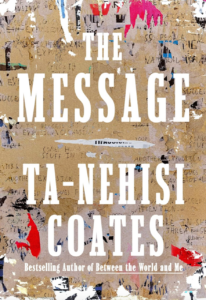A Ladder to the Sky

By John Boyne
384 pages
Published: Nov. 2018
The secret deciders of The Mules selected A Ladder to the Sky as our November read. At 384 pages, it’s a bit long for my modest reading speed, but the diction is simple, the grammar direct, and the story compelling enough to make it at least feel like a fast read.
The Plot
The story begins in a hotel bar in West Berlin, where Maurice Swift, a would-be novelist working as a server, waits on Erich Ackermann, a prize-winning novelist, whom he recognizes. The two strike up a conversation that results in the older writer offering the aspiring one the opportunity to accompany him as a travel assistant and literary mentee on the remaining weeks of a book tour he is taking through Europe.
Because the story is told from Ackermann’s point of view, the reader is privy to the older man’s homosexual interest in turning the apprenticeship into an intimate relationship. Furthermore, because of that same perspective, the reader is allowed to understand the young man’s intentions before the older man does.
As the relationship develops, Ackermann tells Swift about his life 40 years earlier when he was a fledgling writer living in German just before WWII and was infatuated with another aspiring artist – a story that ended in tragedy and betrayal. Which is exactly what subsequently happens between Ackermann and Swift, but in reverse.
The other stories that comprise the novel are similar in that they all revolve around Swift and present the themes of tragedy and irony, as well as ambition and homosexual love.
What I Liked – and Didn’t Like – About It
I do have some criticisms about Boyne’s writing. But they are the sort of literary peccadillos most readers don’t care about. So, I won’t bother with them here. I don’t want to prejudice your thinking.
At its best, A Ladder to the Sky reminded me of Lolita in that it provided me with a view into a sexual impulse that’s alien to me. But unlike Lolita, the picture it painted of Ackermann was almost one-dimensional. There was, to be sure, plenty of stuff going on with Swift – lust, selfishness, ambition, and naïveté. But I was never able to understand any of those emotions beyond a superficial level, as I was with Nabokov’s disturbingly deep and sympathetic presentation of Humbert Humbert.
An important element of the writing is the way Boyne chose to tell the story. Rather than telling it from the narrator’s perspective or in the third person, it’s told by several characters. But unlike the conventional multi-narrator story, in which different characters recount the same event from their unique perspectives, the characters in A Ladder to the Sky tell different stories about how their lives were affected by the protagonist: Maurice Swift.
This contributed to my enjoyment of the book, because, although it was confusing until I figured it out, it added a layer of complexity and intrigue to the story, which is, if I had to pigeonhole it, a psychological thriller.
Critical Reception
A Ladder to the Sky was named one of the best books of the year by The Washington Post and Minneapolis Star Tribune. It was shortlisted for Novel of the Year at the 2018 Irish Book Awards, and, for the most part, received positive reviews from critics and readers.
* “A deliciously dark tale of ambition, seduction and literary theft… an ingeniously conceived novel that confirms Boyne as one of the most assured writers of his generation.” – The Observer
* “Gripping … chilling and darkly comic tale of unrelenting ambition.” – The Daily Express
* “Marvelously engaging, barbed, and witty.” – The New York Times Book Review
On the other hand, here’s a less-than-glowing video review from The Book Worm.
And here’s one from Shawn the Book Maniac, who hated everything about the book, although he admits that most of his colleagues liked it.
About the Author

Before reading A Ladder to the Sky, I knew nothing about the book or about John Boyne, the author. When I googled his name, I was impressed. He is an Irish novelist, which is always a plus with me. And he has published 16 novels for adults, six novels for younger readers, two novellas, and one collection of short stories. His novels are published in over 50 languages. His 2006 novel The Boy in the Striped Pyjamas was adapted into a 2008 film with the same name.
In this video, he talks about his inspiration for A Ladder to the Sky: The Talented Mr. Ripley by Patricia Highsmith.
The Message

By Ta-Nehisi Coates
256 pages
Published: Oct. 2024
Ta-Nehisi Coates is about as celebrated as a contemporary writer can be. He’s received a “Genius Grant” from the MacArthur Foundation and a National Magazine Award. Between the World and Me, his second book, won the 2015 National Book Award and was on the New York Times bestseller list for nearly two years.
His works of fiction – including short stories and comic books – have been successful, too. Most notably his comic-turned-movie Black Panther.
And if all that were not enough, Oprah is his producer.

His latest book, The Message, is an attempt to return to non-fiction. It is mostly about one of his favorite topics: institutional racism in America and the particular danger of White men. But in The Message, he extends his reach significantly with a section on genocidal Jews.
In “Journalism Is Not a Luxury,” the book’s lead essay, Coates writes about his childhood impulse to become a writer and his intellectual interest in language. The purpose of the piece seems to have been to alert the reader who was not aware of his many literary awards that he was a deep and sensitive thinker who belongs in the pantheon of the great political and social thinkers of all time. And to be fair to Coates, he is good at sounding deep and thoughtful. In reading this essay, I felt like I was always one step away from being given some exciting thought or observation that would deepen my own thinking. But it never came.
A critic whose name I can’t remember (sorry!) captured my reaction to this essay. He recommended seeing Coates as a composer of moods and feelings rather than a writer of stories and ideas.
The second essay in the book, On Pharaohs, starts with an account of a trip Coates took to Senegal, which leads to an exploration of the relationship between Africans and African Americans. Having lived in Africa for two years, I was eager to learn his thoughts on the subject. What I found was based on the sort of logic that ran through Ibram X. Kendi’s How to Be an Antiracist – i.e., African Americans today are victims of White oppression, which was born of hate, formed by slavery and colonialism, and perpetuated by Jim Crow laws, and subsequent more subtle forms of discrimination such as redlining and IQ tests.
If Coates made an original case for any of these views, I would have been interested in hearing them, but I found them all to be almost word-for-word recitals of the leftist, post-modern arguments about intersectionality supported by the crippled logic of the EDI handbook.
In Wealth Culture (a book I’m writing now and will be sharing a chapter of next week), I point out several very significant refutations of this argument, including the history of a half-dozen ethnic groups with long-ago histories of slavery and racism and decades-long suffering from prejudice and discrimination in the States, and yet moved beyond the damage it inflicted on their ancestors and went on to claim positions of precedence over White Americans in income, education, net worth, and almost every other metric of social status.
I also debunk the logic that Colonialism is responsible for group inequities in such metrics by pointing out several notable exceptions, such as the Ethiopians in the US and Europe, who were never subject to Colonial rule and yet exist in the same hierarchy of such social metrics as African Americans generally.
Not to mention the historical fact that Colonialism and slavery were hardly Western inventions by White people. They existed for millennia among people of every color – both colonialized and enslaved – and in much greater number among Africans and Arabs. (There is even an argument to be made that slavery still exists in quarters of the Islamic world today.)
In another chapter, “Bearing the Flaming Cross,” Coates writes proudly about his experience working on the 1619 Projectwhen it was being developed by The New York Times. If you aren’t familiar with the 1619 Project, you should know that its thesis is that America was born not in 1776 but in 1619, when the first Africans were brought to Virginia as indentured servants and that “one of the primary reasons the colonists decided to declare their independence from Britain was because they wanted to protect the institution of slavery.” The project was celebrated as a triumph of historical revisionism by many leftists and liberals after it was published, but has since been so roundly criticized for uncountable factual errors and logical inconsistencies by established historians of every political orientation and color that it is now largely ignored, even by those who once praised it. Why Coates wasn’t aware of this is puzzling at best.
And then there’s the book’s last essay, “The Gigantic Dream,” in which Coates describes a visit he made to Yad Vashem, the Holocaust Museum in Jerusalem, followed by a long account of the Israeli-Arab conflict that could have been written by the propaganda arm of Hamas. I don’t think he missed a single charge against Israel that has been made by Islamic terrorist organizations and left-wing academics and their students – almost all of which can be easily disproven by a cursory reading of the facts. Since this is a book review and not an argument defending Israel, I won’t extend my critique of the chapter here, except to say that it was congruent in its thinking and its rhetoric with the previous essays in the book.
Critical Reception
Reviews of The Message were generally positive.
* “Interweaving autobiography and reportage, Coates examines race, his identity as a Black American, and his role as a public intellectual.” – Kirkus Review
* “Ta-Nehisi Coates always writes with a purpose…. These pilgrimages, for him, help ground his powerful writing about race.” – Associated Press
* “A challenging, thought-provoking read that’ll stick with you long after you’ve turned the last page. Coates continues to cement his place as one of our most important contemporary thinkers and writers.” – The Bookshelf Elf
Interesting
* Ta-Nehisi Paul Coates attended Howard University, leaving after five years to start a career in journalism. He is the only child in his family without a college degree.
* The name Ta-Nehisi has its roots in ancient Egypt and carries significant historical and cultural connotations. Derived from the Egyptian language, it translates to Nubia or Land of the Black.
* His father, W. Paul Coates, is the founder of Black Classic Press, which specializes in African American books. He was recently given a controversial lifetime achievement award by the National Book Foundation. Click here for the story.
Click here to watch an interview with Ta-Nehisi Coates about The Message with Jon Stewart.
And click here for an interview with Sean Illing on the Israeli-Arab conflict.
Excellent Advice for Living: Wisdom I Wish I’d Known Earlier

By Kevin Kelly
224 pages
Published: May 2023
We were on our way to a board meeting. SL picked me up in his oversized Ford pickup at my undersized cigar bar/office. I saw it as I heaved myself up and into the shotgun seat: a smallish book with a garish cover. The title was Excellent Advice for Living: Wisdom I Wish I’d Known Earlier. Not the sort of book I’d expect SL to be reading.
The author was listed as Kevin Kelly. A common name. I looked on the inside flap on the back and, yes, it was the same Kevin Kelly that helped launch Wired magazine and wrote bestselling books about technology and the future. I’d not read any of his books, but I’d read a few essays by him. Smart. Forward-looking. Optimistic.
Like all of SL’s books, it was tagged with page markers and busy with underlining and cryptic notes. It looked like SL was gobbling it up. But it wasn’t a novel or non-fiction treatise of some kind. It was a collection of aphorisms.
In the preface, Kelly says that he wrote his first group of 68 when he turned 68 as a present to his three adult children. Then he wrote a few more for others. And a few more for himself. “I kept going till I had 450 bits of advice I wish I had known when I was younger,” he says.
Books of bits of wisdom are as common as photography collections of kittens. Most are written to be used as birthday or holiday gifts, which are put away and deteriorate gradually, unread and mostly unopened.
And for good reason. Most books of aphorisms are banal. Very ordinary explications of very ordinary observations. But there are exceptions: Essays and Aphorisms by Arthur Schopenhauer, Maxims and Reflections by Johann Wolfgang Goethe, The Analytics of Confucius, Pensées by Blaise Pascal, and so on.
Excellent Advice for Living does not reach those heights, but Kelly admits that in the preface: “I am primarily channeling the wisdom of the ages… offering advice I got from others. I doubt any of it is original, although I tried to put it in my own words.”
But insights and observations that have been made before can still be useful and even inspiring or motivating if they are articulated artfully. About 20% of the 450 aphorisms in this book meet that mark. And that is not a small accomplishment.
Some examples:
* “It is impossible for you to become poor by giving. It is impossible for you to become wealthy without giving.”
* “All the greatest prizes in life in wealth, relationships, or knowledge come from the magic of compounding interest, by amplifying small steady gains. All you need for abundance is to keep adding 1% more than you subtract on a regular basis.”
* “If you ask for someone’s feedback, you’ll get a critic. But if instead you ask for advice, you’ll get a partner.”
* “That thing that made you weird as a kid could make you great as an adult if you don’t lose it.”
* “Learn how to be alone without being lonely. Solitude is essential for creativity.”
* “Try hard to solicit constructive criticism early. You want to hear what’s not working as soon as possible.”
* “The natural state of all possessions is to need repair and maintenance. What you own will eventually own you. Choose selectively.”
* “You are what you do. Not what you say, not what you believe, not how you vote, but what you spend your time on.”
* “Be a good ancestor. Do something a future generation will thank you for.”
* “No one is as impressed with your possessions as you are.”
Critical Reception
Not surprisingly – and I think this is partly due to Kelly’s modest disclaimer in introducing the book – I couldn’t find any negative reviews. Here are some examples of what I did find:
* “Hovers between the practical and the poetic… a shorthand manual for living with kindness, decency, and generosity of spirit.” – Maria Popova
* “All will benefit from [Kelly’s] idiosyncratic wit and wry humor.” – People
* “An unapologetically upbeat offering.” – Publishers Weekly
* “If you don’t find at least 17 golden nuggets of advice from Kevin Kelly’s list you’re not awake.” – Daniel Pink
About the Author

Kevin Kelly is the founding executive editor of Wired magazine and a former editor and publisher of the Whole Earth Review. He has also been a writer, photographer, conservationist, and student of Asian and digital culture.
Among Kelly’s personal involvements is a campaign to make a full inventory of all living species on Earth, an effort also known as the Linnaean enterprise. He is also sequencing his genome.
Fanny Hill

By John Cleland
178 pages
Published in two installments: Nov. 1748 and Feb. 1749
John Cleland wrote Fanny Hill while he was in debtor’s prison in London. It is considered “the first original prose pornography, and the first pornography to use the form of a novel.” It is also one of the most prosecuted and banned books in history.
But it is loaded with euphemisms. Notwithstanding Cleland’s commitment to describing every possible detail of every body part involved in every sexual encounter, he does it only with flowery metaphors and figurative language. For example, the vagina is sometimes referred to as “the nethermouth.” (And, no, “fanny” didn’t mean “fanny” back then.)
The book was banned in the UK, and in 1749, a year after the first installment was published, Cleland and his publisher were arrested and charged with “corrupting the King’s subjects.” A bishop even blamed two earthquakes on the “unnatural lewdness” of the “vile book.”
It stayed banned in the UK for more than 200 years (until 1970), but pirated copies were printed and circulated in England and America. In 1821, it was outlawed by a Massachusetts court in one of the fledgling country’s first obscenity trials. And in 1963, when a new edition was published by G.P. Putnam’s Sons under the title Memoirs of a Woman of Pleasure, a case against it eventually made it all the way up to the Supreme Court, which ruled six to three that it was not obscene. Click here.
Why I’m Reading It
I saw a review of the book in Literary Hub, a digital newsletter on all things literary that my brother recommended to me. The review piqued my interest. But what prompted me to read it was that there was a link at the end that took me directly to the manuscript as it was originally published.
The Plot
Fanny Hill takes the form of two long letters to an acquaintance identified only as “Madam” from one Francis Hill, a rich Englishwoman in her middle age, who leads a life of contentment with her loving husband Charles and their children. Fanny has been prevailed upon by “Madam” to recount the “scandalous stages” of her earlier life, which she proceeds to do with “stark naked truth” as her governing principle.
Interesting
Because of the book’s notoriety (and public domain status), numerous adaptations have been produced. Some examples:
* Fanny Hill (US/West Germany, 1964), directed by Russ Meyer
* The Notorious Daughter of Fanny Hill (US, 1966), directed by Peter Perry (Arthur Stootsbury)
* Fanny, Being the True History of the Adventures of Fanny Hackabout-Jones (1980), a retelling by Erica Jong purporting to tell the story from Fanny’s point of view
* Fanny Hill (West Germany/UK, 1983), directed by Gerry O’Hara, starring Lisa Foster, Oliver Reed, Wilfrid Hyde-White, and Shelley Winters
* Fanny Hill (off-Broadway musical, 2006), starring Nancy Anderson as Fanny
* Fanny Hill (UK, 2007), written by Andrew Davies for the BBC, starring Samantha Bond and Rebecca Night
Thanks to Project Gutenberg, you can read it – for free – here.











